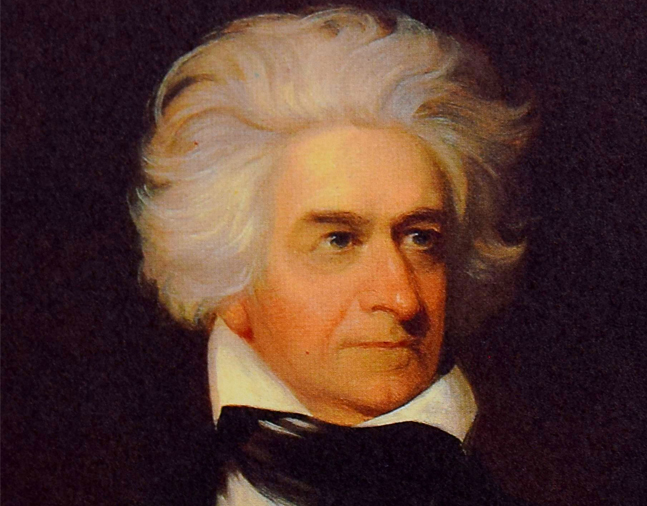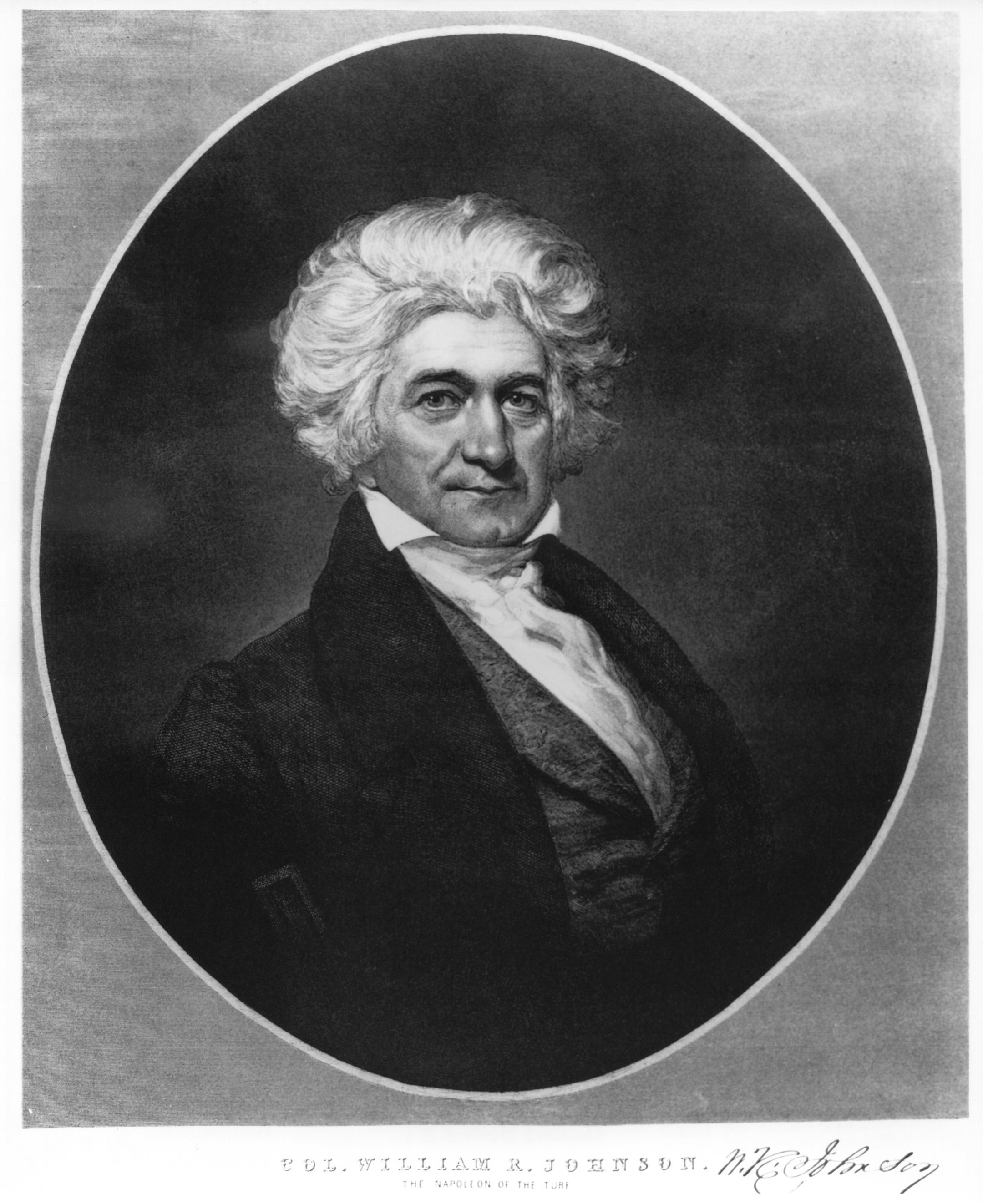William R. Johnson
Known as the “Napoleon of the Turf,” Col. William Ransom Johnson was the most prominent figure in American racing during the first half of the 19th century. An owner, breeder, and trainer, Johnson’s powerful stable included Hall of Famers Sir Archy and Boston, as well as star fillies Reality, Bonnets o’ Blue, Vanity, Maria, Havoc, Argyle, Trifle, and Ironette. Johnson was also a politician, serving in the North Carolina and Virginia legislatures.

1986
1782, Warrenton, North Carolina
1849, Mobile, Alabama
1801-1849
Biography
Known as the “Napoleon of the Turf,” Col. William Ransom Johnson was the most prominent figure in American racing during the first half of the 19th century. An owner, breeder, and trainer, Johnson’s powerful stable included Hall of Famers Sir Archy and Boston, as well as star fillies Reality, Bonnets o’ Blue, Vanity, Maria, Havoc, Argyle, Trifle, and Ironette. Johnson was also a politician, serving in the North Carolina and Virginia legislatures.
Johnson was born in 1782 to a socially prominent family with large land holdings in the horsey Halifax region of North Carolina. Before the age of 21, Johnson was racing his father’s horses there and in Virginia. In two seasons, 1807 and 1808, Johnson started horses in 63 races and won 61, earning the “Napoleon of the Turf” moniker. His reputation was undiminished by losses in two great North vs. South matches, with Henry being defeated by Hall of Famer American Eclipse in 1823, and Boston’s loss to Fashion in a matchup of Hall of Famers in 1842.
Boston was the most notable of the many great horses associated with Johnson. Racing from 1836 through 1843, Boston won 40 of his 45 races en route to the Hall of Fame. Boston was a grandson of Sir Archy, another Hall of Fame member of Johnson's stable and America’s foundation native sire.
A member of the state legislatures in North Carolina and Virginia for 28 years, Johnson owned Oaklands Plantation, which ran some three miles along the Appomattox River near Petersburg, Virginia, and featured an 18-room mansion. There he entertained such friends as Andrew Jackson, Henry Clay, Richard Ten Broeck, and John Randolph with talk of horses and politics on the front porch overlooking his two-mile training track. At the entrance of Oaklands was a sign that read, “There is nothing so good for the inside of a man as the outside of a horse.”
Media





